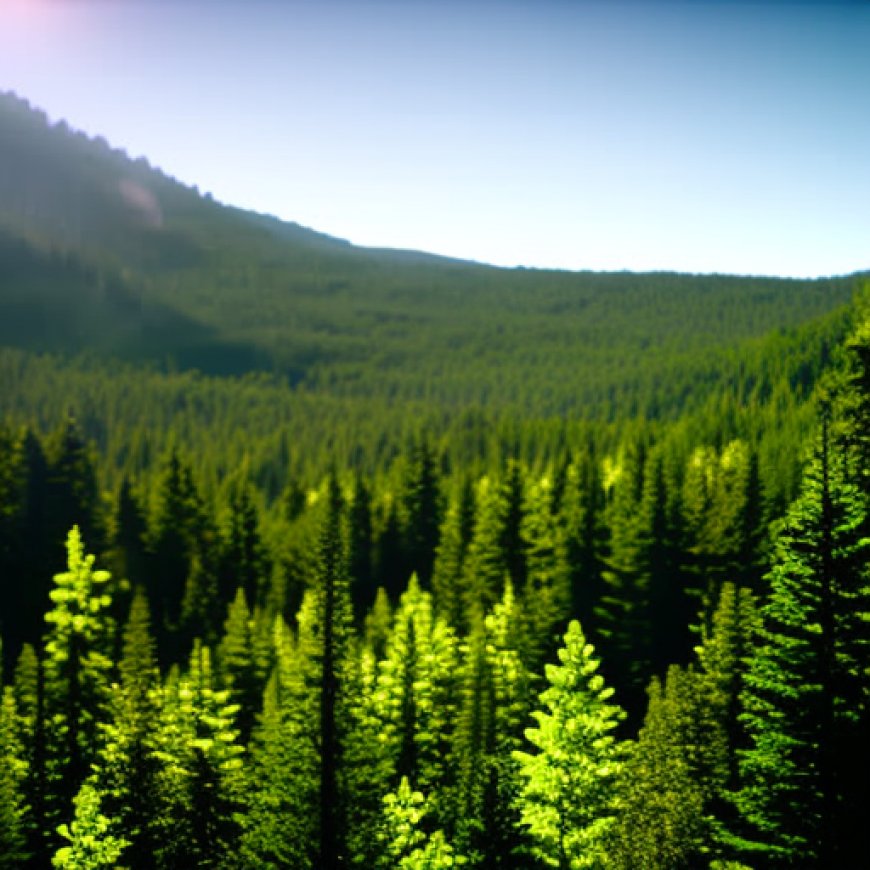Can we make Vermont’s forests seem older, faster?
Can we make Vermont's forests seem older, faster? Vermont Public


Old Forests and the Sustainable Development Goals (SDGs)
Old forests are good for water quality, plant and animal, and fungi life. Scientists also believe that they have a better chance of surviving climate change than younger forests do.
In Vermont and New England, the climate is changing fast — faster than the national average.
And some scientists want to know: Can we make our young forests more like old forests faster, so they have a better chance of growing old?
More from Vermont Public: NOAA says a warmer-than-average winter is coming to the Northeast this year
- The Catamount Community Forest in Williston is a maze of trails. In its former life, it was a dairy farm. The 400 acres of woods here don’t feel very far from that.
- Chittenden County Forester Ethan Tapper leads the way to a stand of trees that’s much more open than the scraggly pine forest around it.
- “So what we did here was we took a forest that was this pretty even-aged stand of pines — about 90 years old — that regenerated in an old pasture,” Tapper said. “And by ‘even-aged’ I mean that all those pine trees were, like, the same age, basically, one canopy layer. And we left a lot of them as legacy trees.”
In this “teenaged” stand, they cut down smaller trees to create space for the ones they left to continue growing. And they left the cut trees to decompose on the ground.
The larger trees that are leftover will be allowed to grow old. The hope is that all this new space will make it easier for them to do that.

Abagael Giles
/
Vermont Public
<
SDGs, Targets, and Indicators
1. Which SDGs are addressed or connected to the issues highlighted in the article?
- SDG 13: Climate Action
- SDG 15: Life on Land
2. What specific targets under those SDGs can be identified based on the article’s content?
- SDG 13.2: Integrate climate change measures into national policies, strategies, and planning.
- SDG 15.2: Promote the implementation of sustainable management of all types of forests, halt deforestation, restore degraded forests, and substantially increase afforestation and reforestation globally.
3. Are there any indicators mentioned or implied in the article that can be used to measure progress towards the identified targets?
- Forest diversity (trees of all ages and species)
- Presence of standing dead wood
- Resilience to invasive pests, extreme weather, and hotter temperatures
- Carbon storage in forests
- Biodiversity in forests (birds, wildflowers)
Table: SDGs, Targets, and Indicators
| SDGs | Targets | Indicators |
|---|---|---|
| SDG 13: Climate Action | Target 13.2: Integrate climate change measures into national policies, strategies, and planning. | – |
| SDG 15: Life on Land | Target 15.2: Promote the implementation of sustainable management of all types of forests, halt deforestation, restore degraded forests, and substantially increase afforestation and reforestation globally. | – |
| – | Forest diversity (trees of all ages and species) | |
| – | – | Presence of standing dead wood |
| – | – | Resilience to invasive pests, extreme weather, and hotter temperatures |
| – | – | Carbon storage in forests |
| – | – | Biodiversity in forests (birds, wildflowers) |
Behold! This splendid article springs forth from the wellspring of knowledge, shaped by a wondrous proprietary AI technology that delved into a vast ocean of data, illuminating the path towards the Sustainable Development Goals. Remember that all rights are reserved by SDG Investors LLC, empowering us to champion progress together.
Source: vermontpublic.org

Join us, as fellow seekers of change, on a transformative journey at https://sdgtalks.ai/welcome, where you can become a member and actively contribute to shaping a brighter future.







